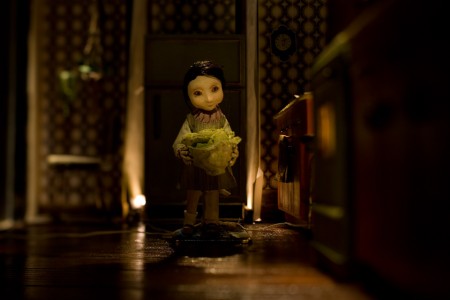So, now that my goal is to motor through the film shot by shot and get it done (but without rushing it, of course), I’m going to publicly declare my progress here, to keep myself motivated and to assess where I’m at.
I have a new deadline now, and it’s one that I have to stick to. The kind people at Bravo!FACT have given me an extension, and now my deadline is October 1st, 2010. That is 7 months away. It sounds far off, but I think it will be a perfect amount of time to get everything done, if I stay focused, and ask for a bit of help here and there.
I’ve divided the film into sections, to make it more manageable, and to help myself keep up with a steady, manageable pace. Each month I have to complete one section of the film. There are a total of 27 shots. Here’s how I’ve broken them up:
February:
My Feb goal was to complete the section where Sabela is introduced, and the cabbage gets put into the soup pot. This section consists of 8 scenes: scenes 13-20. So far I’ve shot 6/8. (Three of them were shot last year.) The next shot — scene 18 — is prepped and will be finished off today. I’m a little behind, in that the final scene of this section will take some time to plan… but that’s not a big deal, as I’m also a little ahead on my March goals.
March:
In March I plan to shoot scenes 21-24. These will require new props to be built, as the sequence consists of overhead shots of the cabbage soup pot. I need to be able to show boiling water, with cabbage leaves floating around in them.  My current little stovetop pot is made of copper pipe, so its diametre is only about 1 1/4 inches… not enough room to animate in. So I’ll need to build a new, larger set for these scenes — well, just a larger version of the pot, stovetop, and countertop. AND I’ll need to experiment with Mike Brent’s and Shelley Noble’s advice regarding animated “water.”
April:
This month I’ll work on scenes 2-7. In these six scenes, not too much happens — just a lot of intricate closeups of the cabbage and set, which will alow for some space for graphics. This will be a time to heavily experiment with lighting and camera work, because the scenes will be so minimal (compared to the kitchen scenes I’m shooting now.)
May:
May will be the month I will fear and sweat over. I will need to animate not one, but FOUR characters, AND animate a new “set” coming on to the stage. These are the scenes where we introduce Sabela’s family, who are seated in the dining room. Scenes 25-27.
June:
At this point I can return all my rented equipment! Hurray. Now all the animation switches over to some more experimental techniques that I have in mind. (Well, they are experimental for me. They have probably been done before.)  They involve some ink and a projector, and that’s all I’ll say for now :) These are scenes 8-12.
July:
July will be more of the ink / experimental animation, plus some compositing, stabilization and tracking, rig removal, etc.
August:
This month will be time to design and composite all the graphics. Remember, the film is based on a Galician poem, so there will be many words to incorporate visually, to help translate the poem. Also, this month I’ll work on the title graphics and title animation, which I’ve counted as Scene 1.
September:
September will be time to record audio, and finish any last post-production things. There is a bit of padding here; I don’t think the audio sessions will take a month or anything… but I will probably need extra time for things I’ve left out, or underestimated the timing of.
October 1st:
Send everything off to Bravo!FACT!
And celebrate!
And tell everyone when it will be on TV!
By the way, I am REALLY happy with how my walk cycle shot turned out — the one with the tilt shift lens — and my little closeup that I showed the lighting for, below. My dilemma now is… how much of the film should I show? I would like to keep some mystery to the final film, and not just show it shot by shot! I’m sure Bravo would not be thrilled with that, either. PLUS the shots I’m showing are unfinished and rough. Not sure yet. What do you think?… (Though to be honest there are only about five people reading this blog… hi Shelley and mom! 😉
I joke.)
I’m very happy ALL you guys are reading, BTW! 🙂










